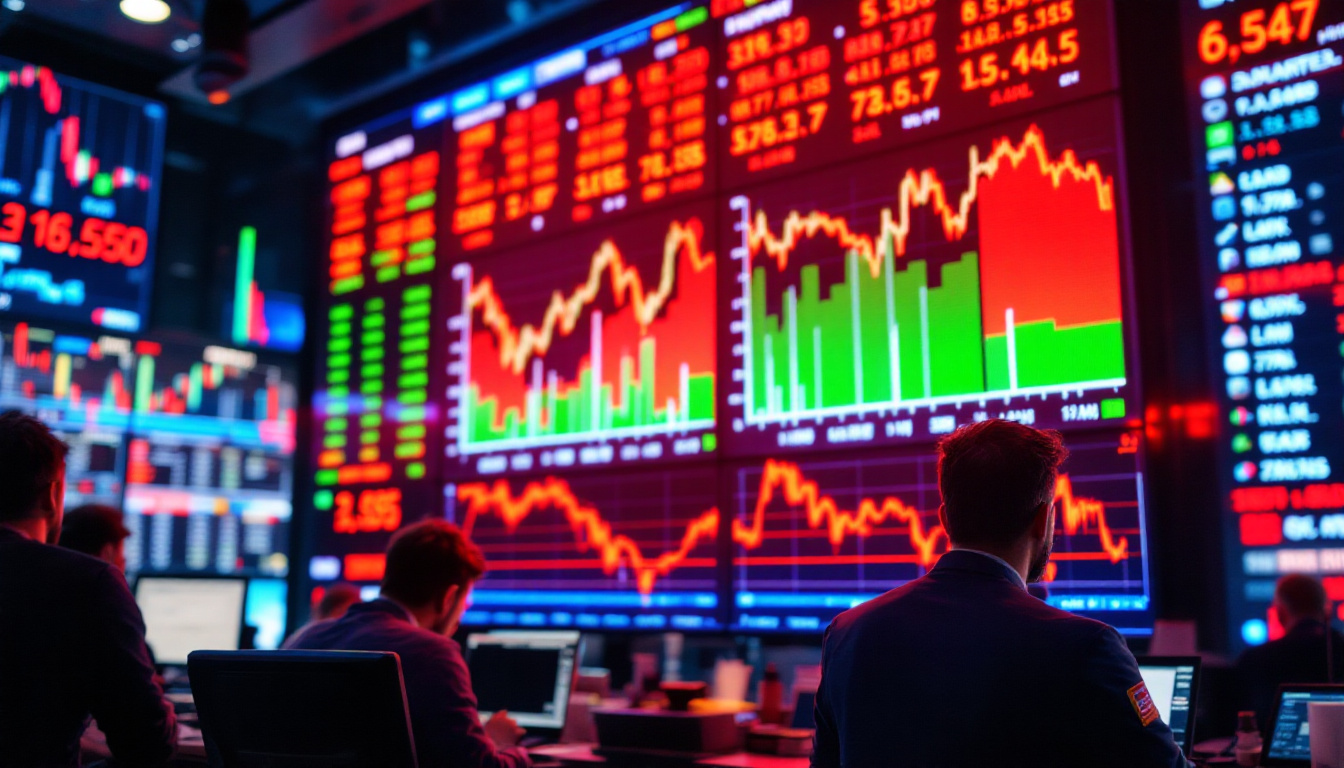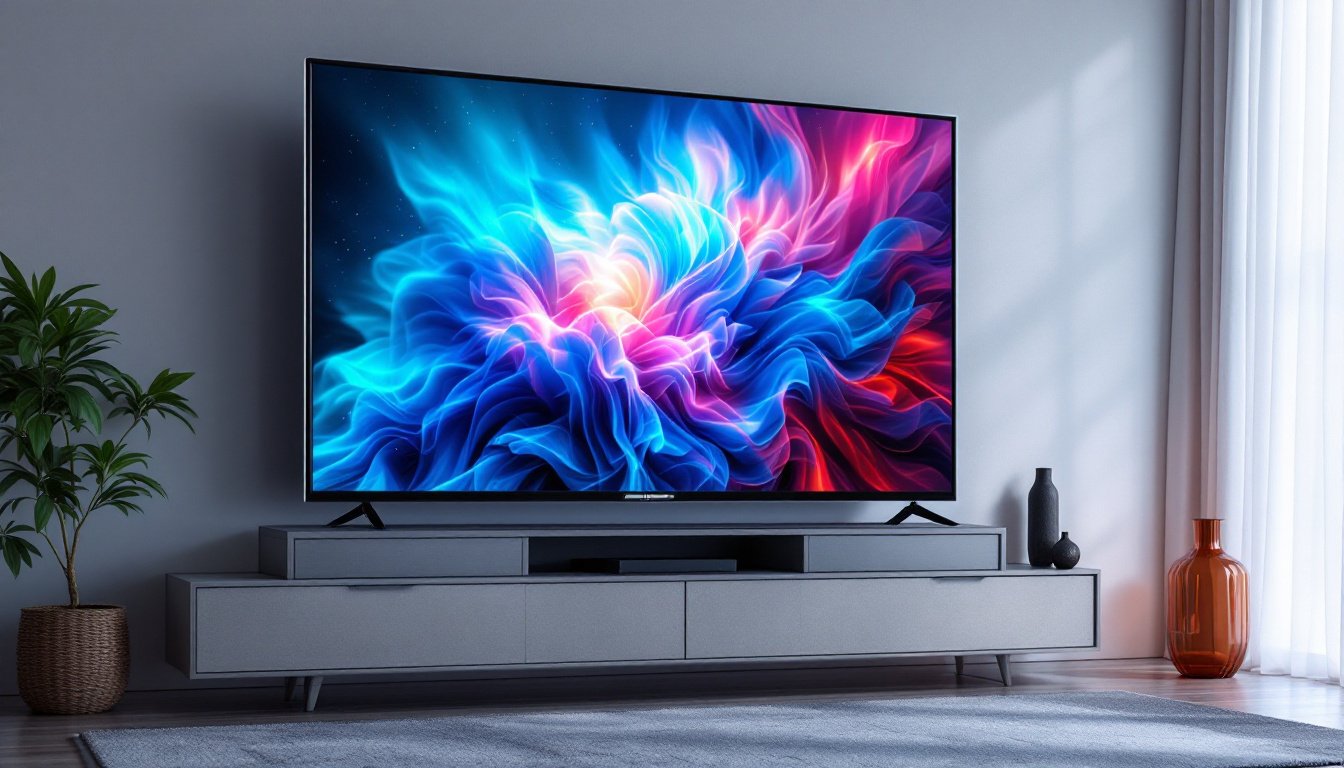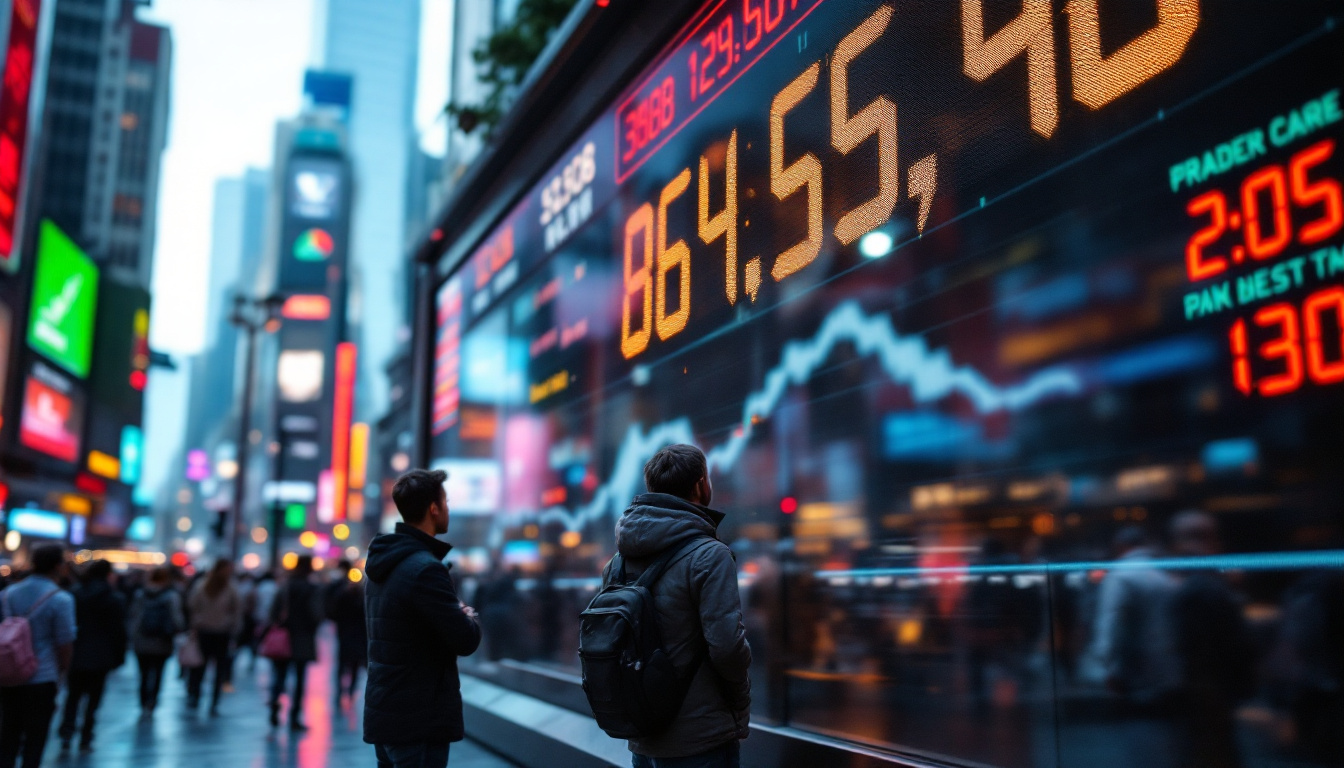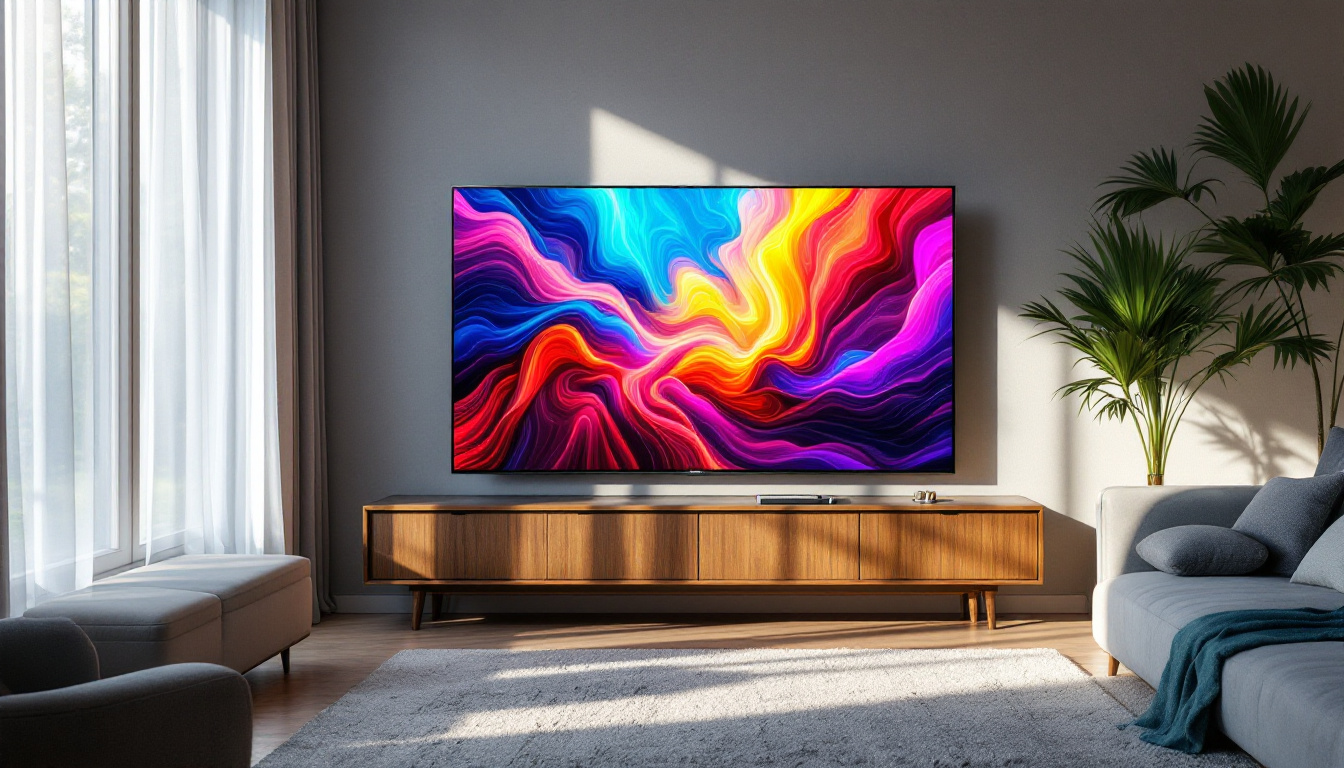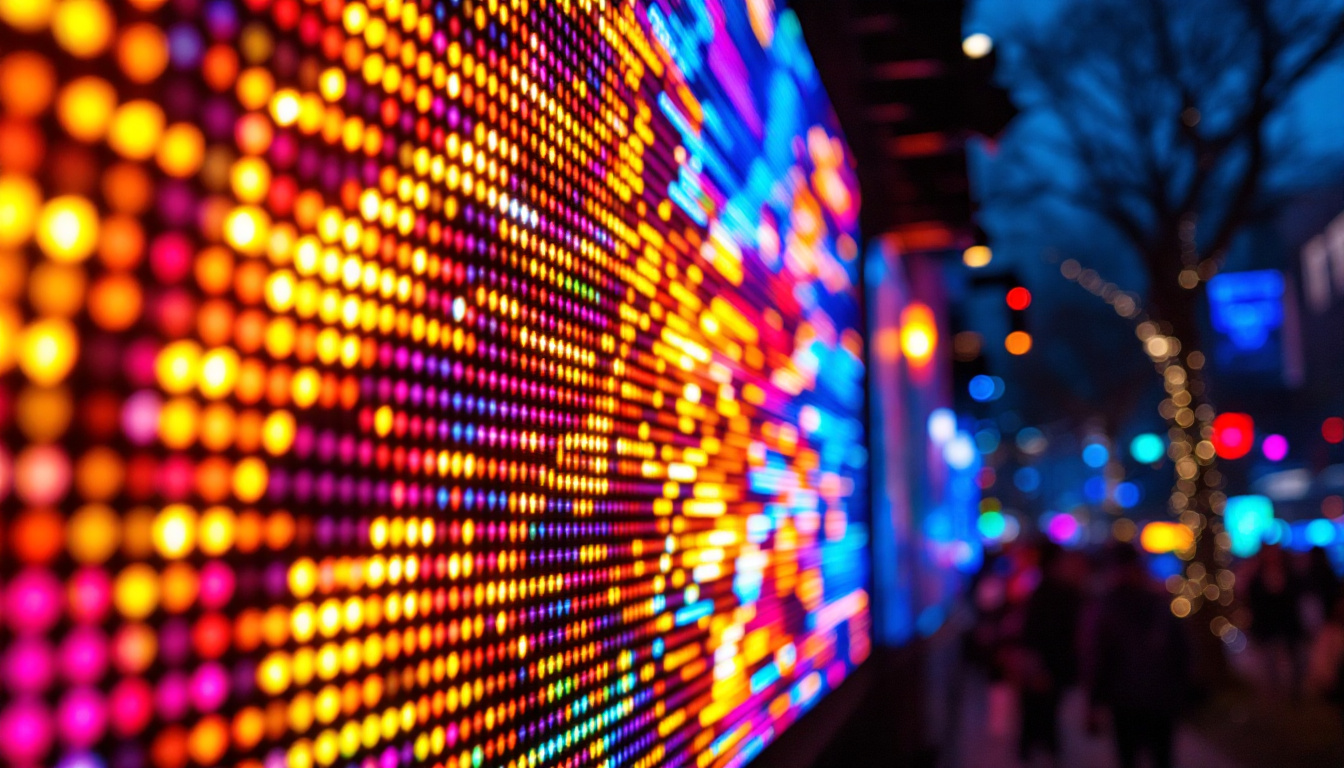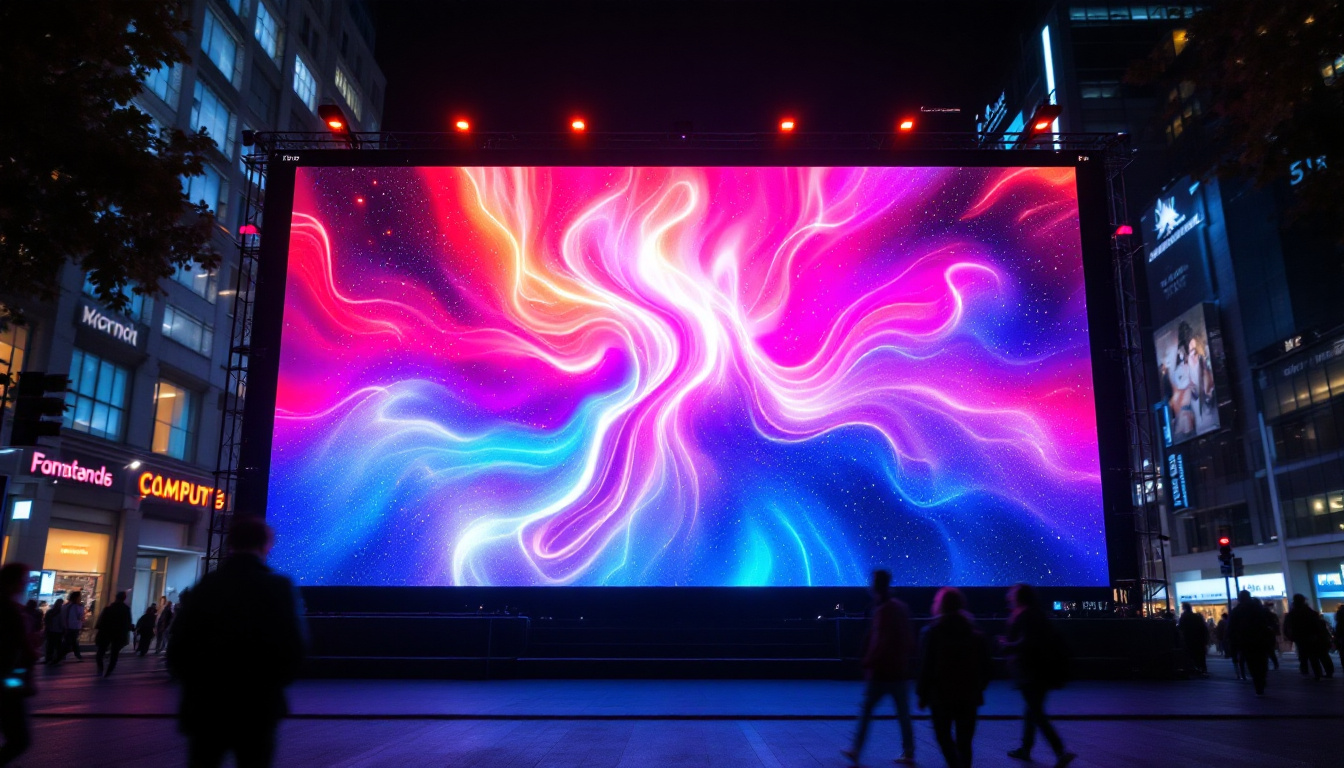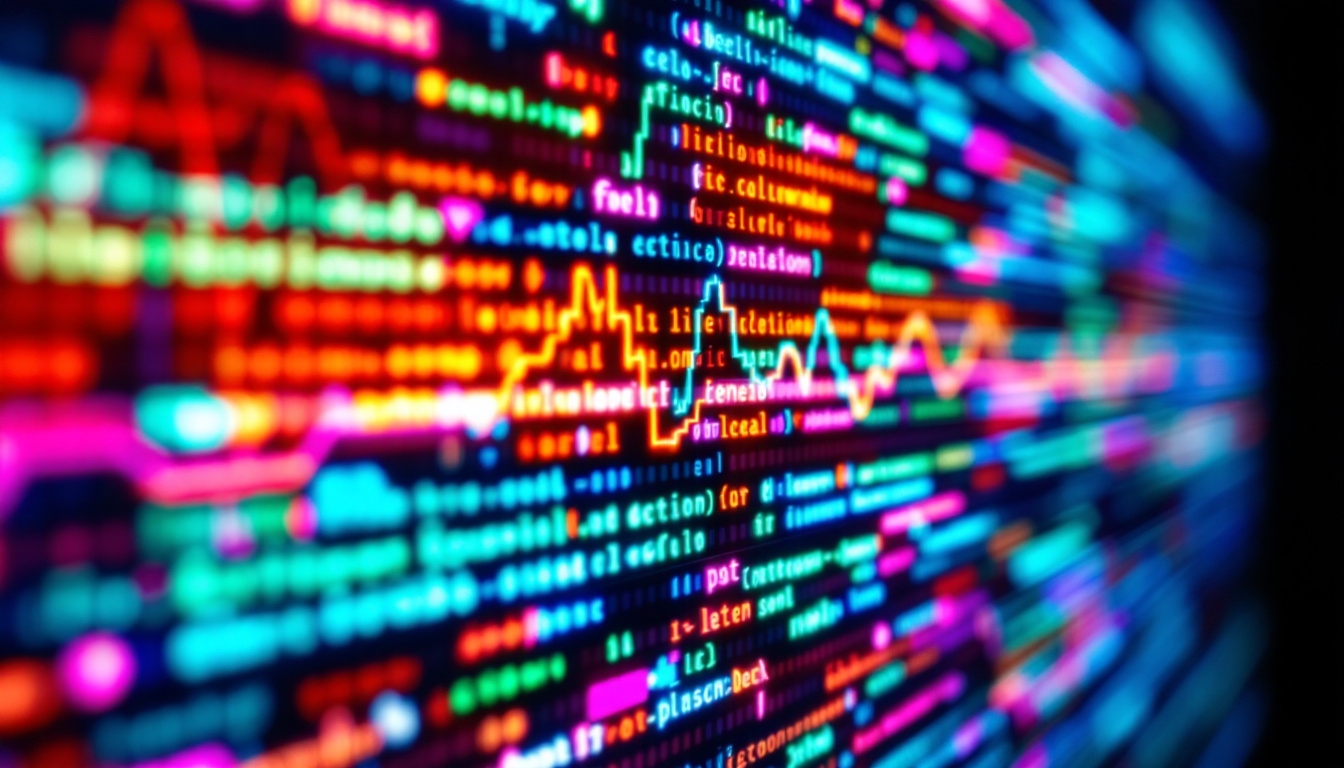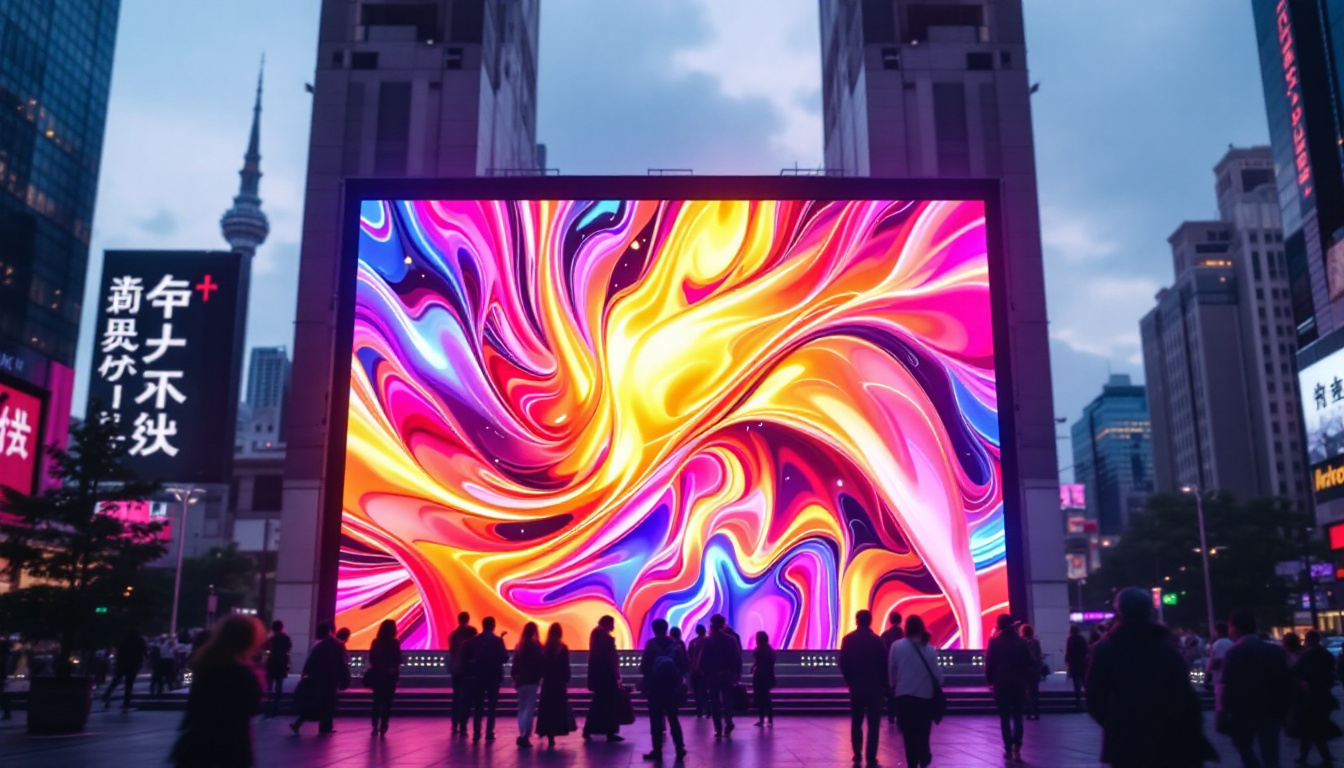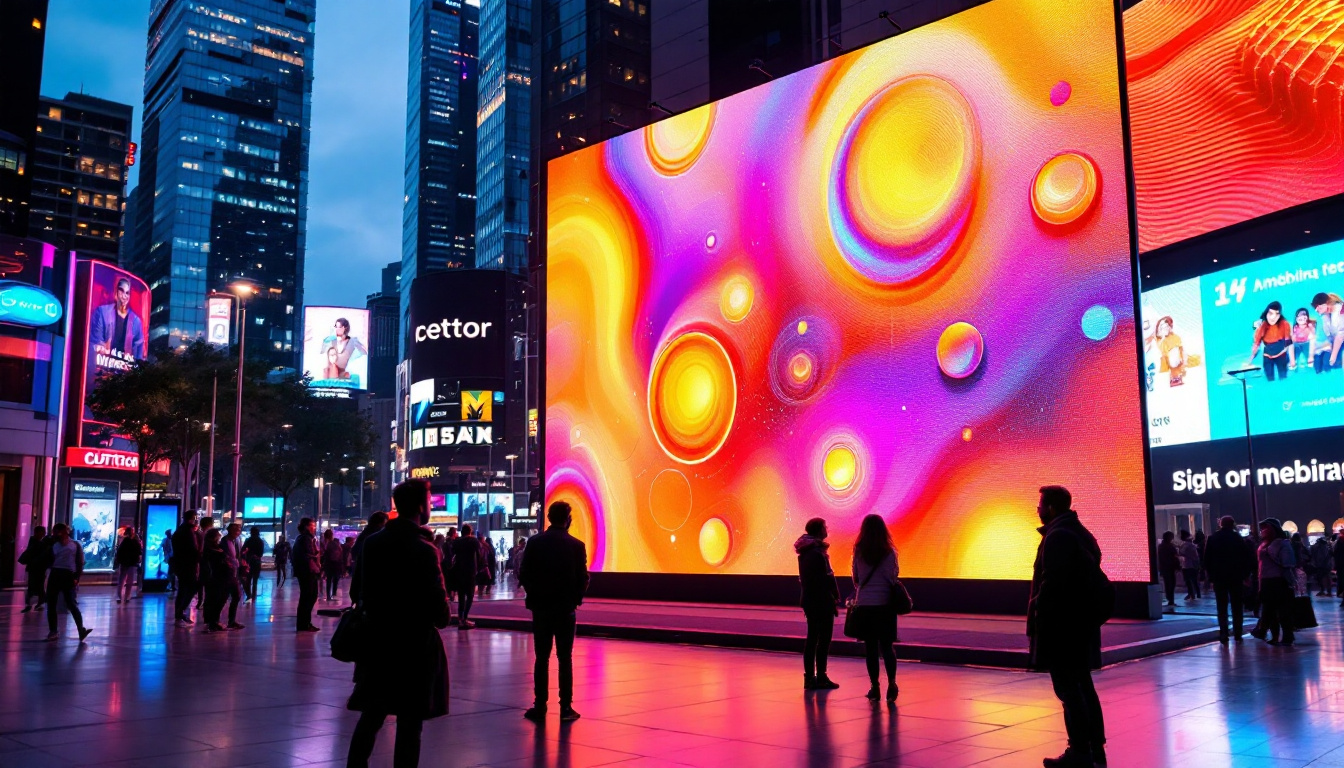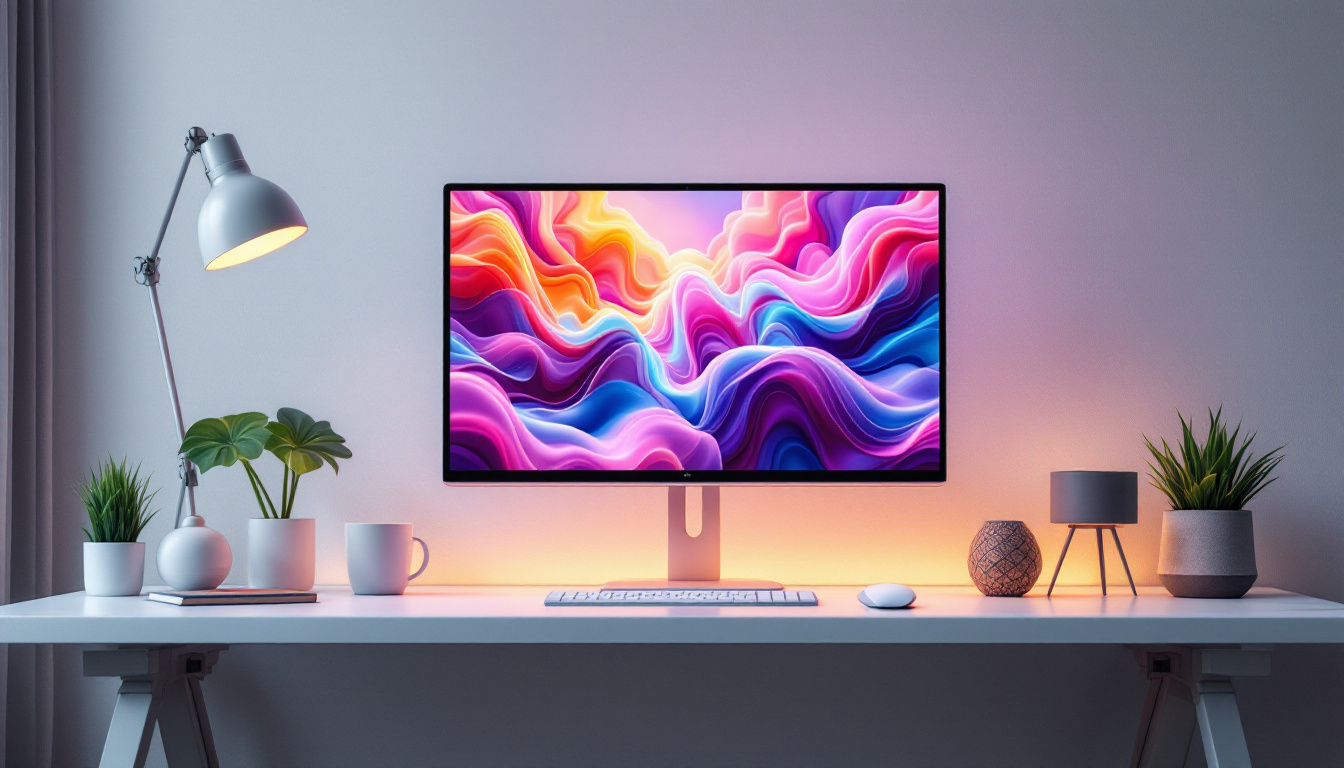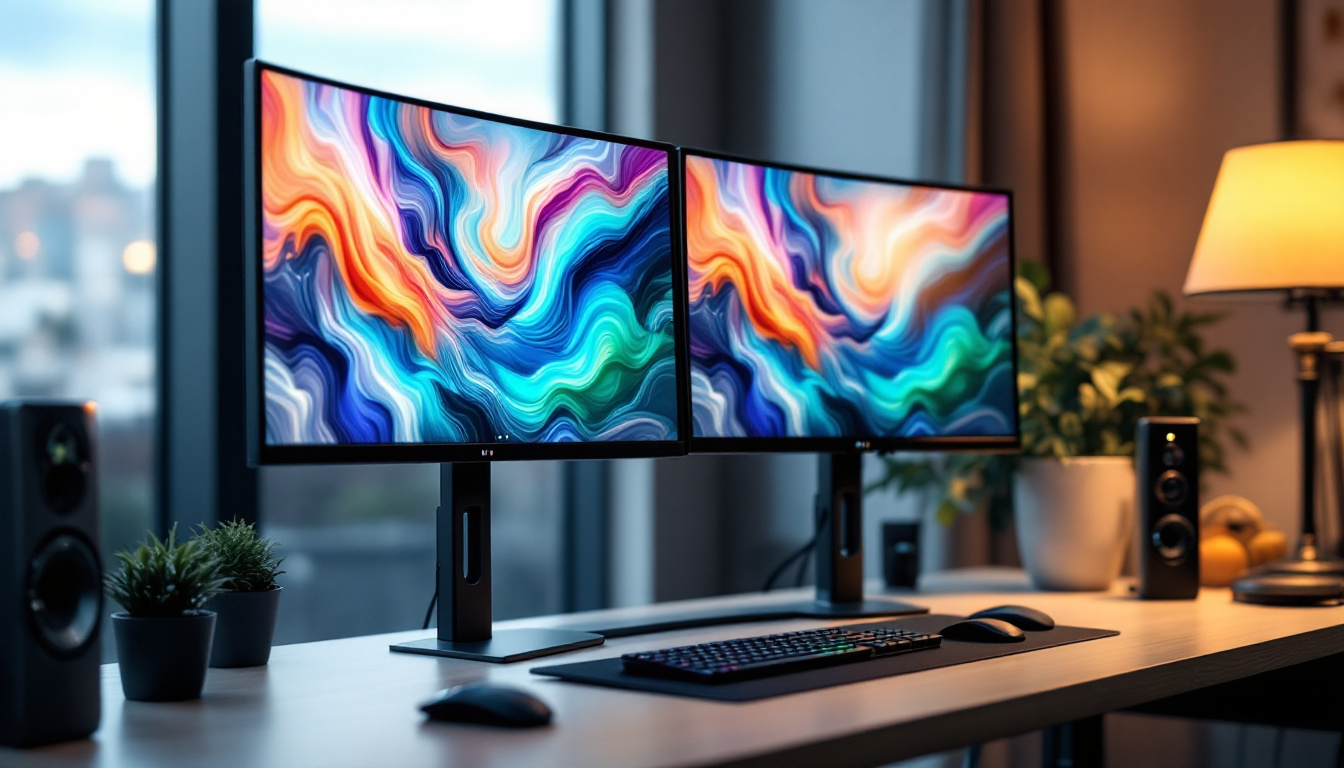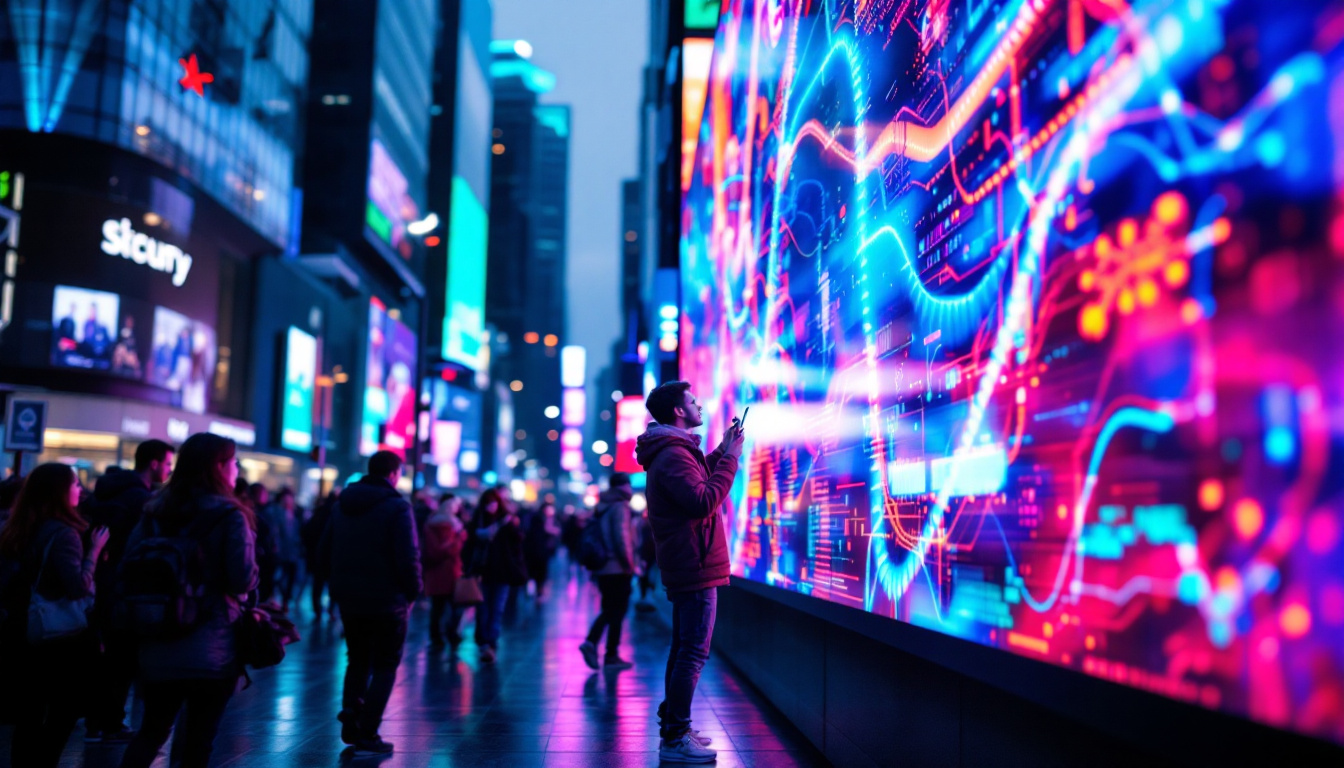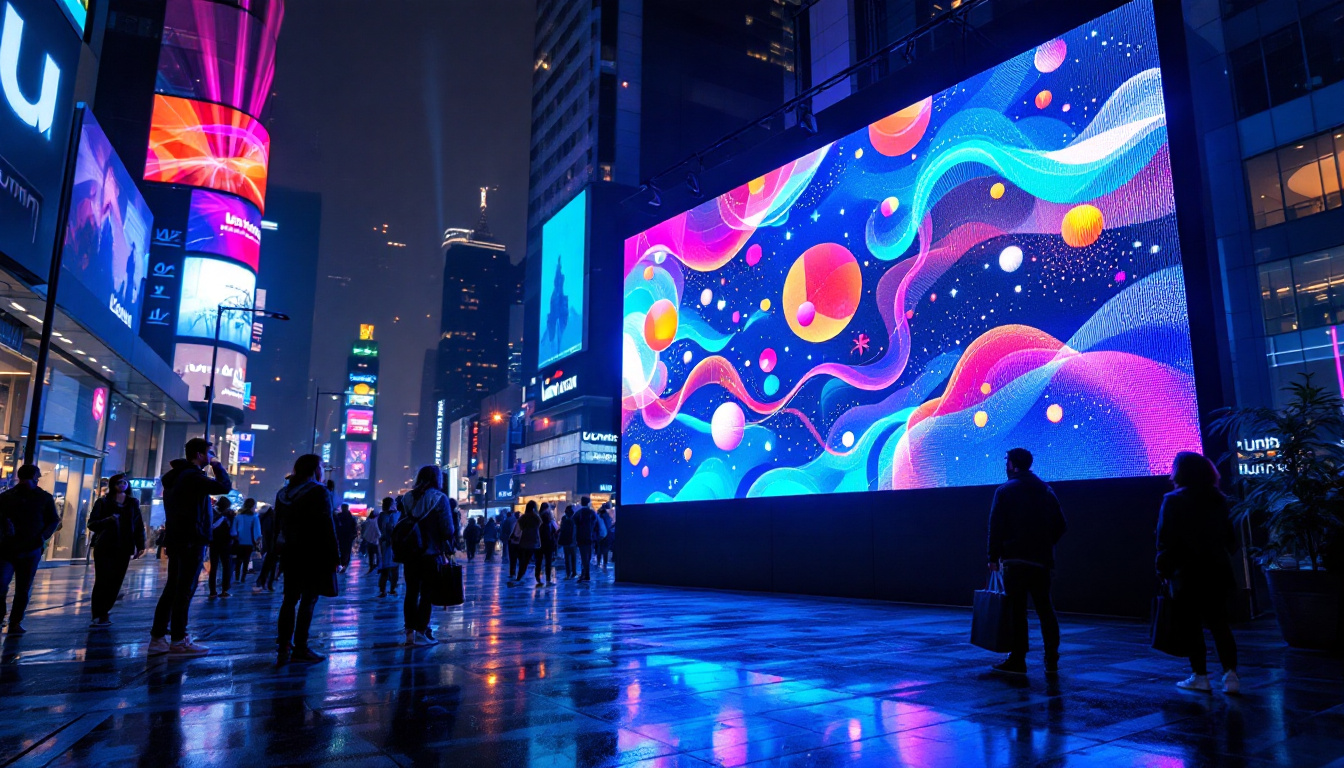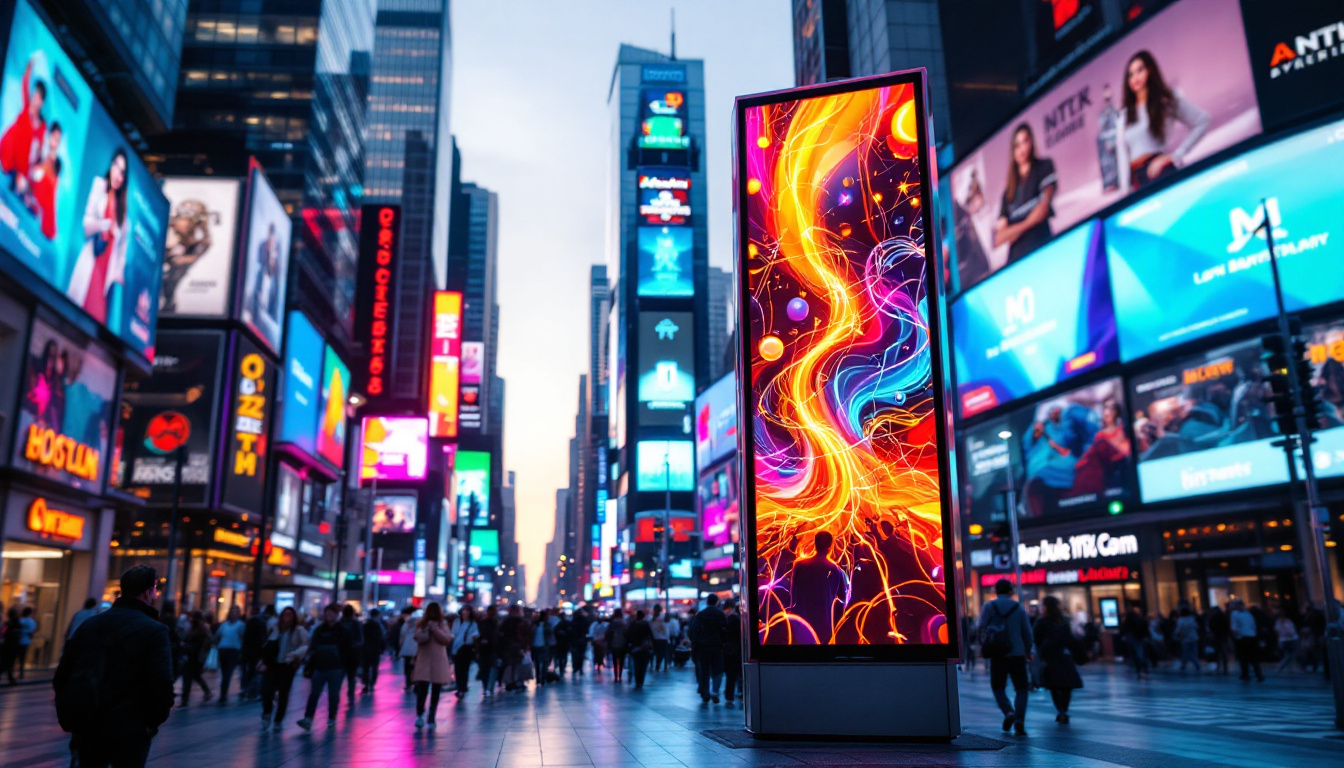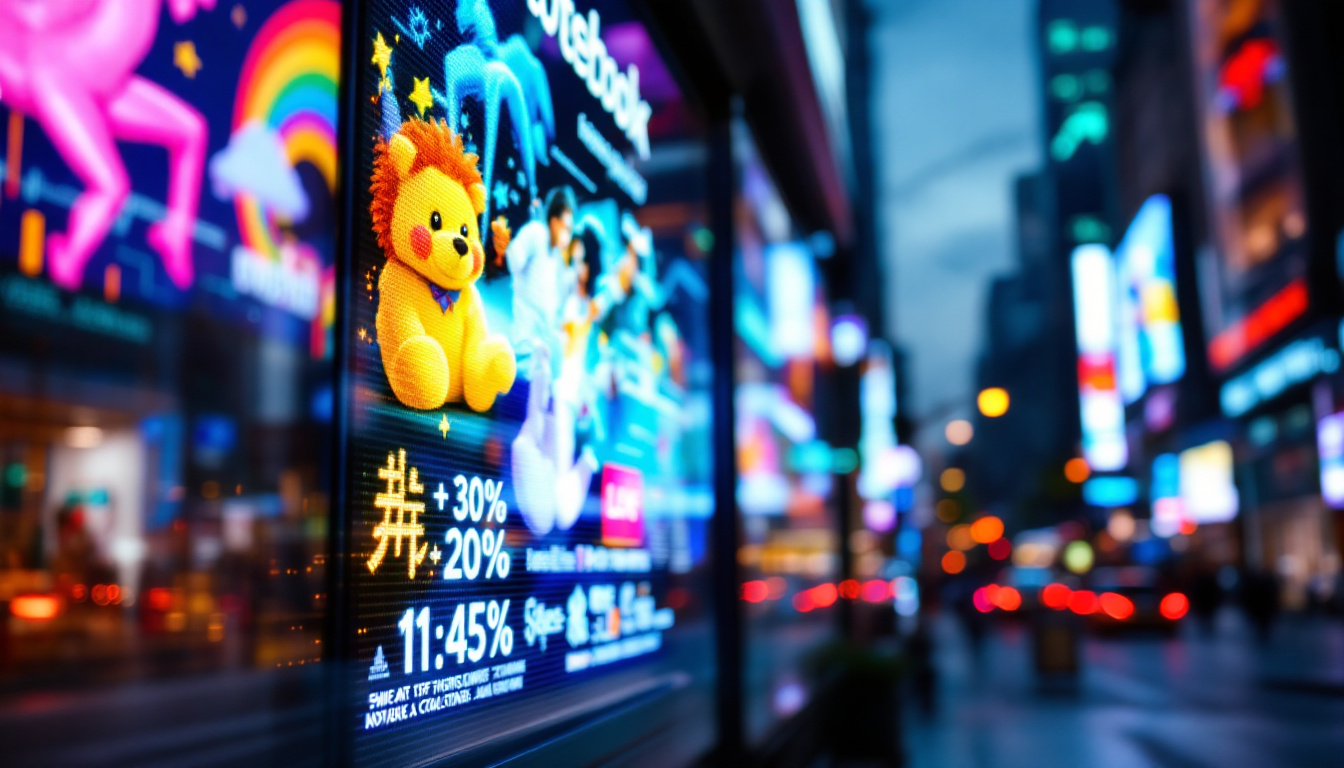The stock market is a dynamic environment where information flows rapidly, and decisions are made in real-time. To facilitate this fast-paced atmosphere, stock exchanges and trading firms utilize various technologies, including LED displays. These displays serve as crucial tools for conveying essential market data to traders, investors, and the general public. This article delves into the intricacies of LED displays in the stock market, exploring their functionality, benefits, and the technology behind them.
Understanding LED Displays
LED displays, or Light Emitting Diode displays, have revolutionized the way information is presented visually. Unlike traditional display technologies, LED displays offer superior brightness, contrast, and energy efficiency. This makes them ideal for high-visibility environments such as stock exchanges, where clarity and immediacy are paramount. The ability to convey critical information in real-time is essential in such fast-paced settings, where every second counts and the stakes are high.
How LED Displays Work
At the core of an LED display are tiny diodes that emit light when an electric current passes through them. These diodes are arranged in a grid to form pixels, with each pixel capable of displaying a range of colors. The combination of these pixels creates the images and text seen on the display. The technology allows for vibrant colors and sharp images, making it easier for viewers to absorb information quickly. Additionally, advancements in LED technology have led to the development of high-definition displays, which enhance the viewing experience further by providing even greater detail and clarity.
Moreover, LED displays can be configured in various sizes and shapes, from large video walls to smaller ticker displays. This versatility enables them to be used effectively in different settings, whether in a trading floor, lobby, or public space. The modular nature of LED panels allows for seamless integration into various architectural designs, making them not only functional but also aesthetically pleasing. As a result, LED displays have become a popular choice for both commercial and artistic installations, enhancing environments while delivering crucial information.
Types of LED Displays Used in Stock Markets
In the context of stock markets, several types of LED displays are commonly employed:
- Ticker Displays: These are continuous scrolling displays that show stock prices, indices, and other financial data. They are often placed at the bottom of screens or above trading floors to provide real-time updates. The rapid movement of data on these displays ensures that traders are always aware of the latest market shifts, allowing them to make informed decisions promptly.
- Video Walls: Comprising multiple LED panels, video walls can display complex data visualizations, charts, and news feeds. They are typically used in trading rooms to provide a comprehensive view of market conditions. The ability to customize content across these panels means that traders can focus on specific stocks or trends, enhancing their analytical capabilities.
- Information Boards: These displays provide static or dynamic information about stocks, commodities, and indices. They are often used in public areas to keep investors informed. In addition to financial data, these boards can also display economic news, company announcements, and other relevant information that can influence trading decisions.
Furthermore, the integration of LED displays with advanced software solutions allows for real-time data analytics and visualization, enabling traders to respond more effectively to market changes. The combination of high-quality visuals and intelligent data processing creates an environment where information is not just presented but is also actionable. This synergy between technology and finance is transforming the landscape of trading, making it more dynamic and responsive than ever before.
The Role of LED Displays in Stock Trading
LED displays play a pivotal role in stock trading by enhancing the visibility of critical market data. Traders rely on these displays to make informed decisions quickly, as even a slight delay in information can lead to significant financial implications.
Real-Time Data Presentation
One of the primary advantages of LED displays is their ability to present real-time data. This capability is essential in a market where prices fluctuate rapidly. LED displays can show live stock prices, trading volumes, and other relevant metrics, allowing traders to react promptly to market changes.
Furthermore, the immediacy of LED displays helps in reducing the cognitive load on traders. Instead of sifting through various sources of information, traders can glance at the display and obtain the necessary data in an instant. This efficiency is particularly beneficial during high-stakes trading hours, where every second counts, and the ability to access information quickly can be the difference between profit and loss.
Enhancing Decision-Making
Effective decision-making in stock trading relies heavily on accurate and timely information. LED displays provide a centralized platform for displaying crucial data, which can include market trends, stock performance, and economic indicators. This aggregation of information aids traders in analyzing market conditions and making strategic decisions.
Moreover, the visual appeal of LED displays can enhance comprehension. Charts and graphs displayed on these screens can illustrate trends and patterns more effectively than text-based data, allowing traders to grasp complex information quickly. The use of color coding and dynamic animations can also highlight significant changes in the market, drawing attention to critical shifts that may require immediate action. This visual representation not only aids in understanding but also fosters a more intuitive grasp of market dynamics, empowering traders to make decisions based on a holistic view of the data.
In addition to their role in presenting data, LED displays also serve as a communication tool within trading environments. They can be programmed to display alerts, news updates, and even social media sentiments related to specific stocks or market sectors. This integration of diverse information sources into a single display enhances a trader’s situational awareness, allowing them to consider external factors that may influence market behavior. By staying informed about global events or economic reports, traders can better anticipate market movements and adjust their strategies accordingly.
Benefits of Using LED Displays in Stock Markets
The integration of LED displays in stock markets offers numerous benefits that contribute to a more efficient trading environment.
Improved Visibility and Clarity
One of the standout features of LED displays is their high visibility. They are designed to be seen from various angles and distances, ensuring that traders and investors can access information without straining their eyes. This is particularly important in bustling trading environments where multiple screens may be in use.
Additionally, the clarity of LED displays minimizes the risk of misinterpretation. With crisp text and vibrant colors, the information presented is easy to read and understand, reducing the chances of errors in trading decisions.
Energy Efficiency and Longevity
LED technology is known for its energy efficiency compared to traditional display options. This not only reduces operational costs for trading firms but also aligns with growing environmental concerns. The longevity of LED displays further enhances their appeal, as they require less frequent replacements, resulting in lower maintenance costs over time.
Challenges and Considerations
While LED displays offer numerous advantages, there are also challenges and considerations that must be addressed when implementing this technology in stock markets.
Initial Investment Costs
The initial investment for high-quality LED displays can be substantial. Trading firms must weigh the costs against the potential benefits and improvements in efficiency. While LED displays can lead to long-term savings, the upfront expenditure may be a barrier for some organizations.
However, it is essential to consider the return on investment (ROI) that can be achieved through improved decision-making and enhanced trading performance. Over time, the benefits of LED displays may outweigh the initial costs.
Technological Maintenance
Like any technology, LED displays require regular maintenance to ensure optimal performance. This includes software updates, calibration, and cleaning. Organizations must be prepared to allocate resources for ongoing maintenance to avoid potential disruptions in service.
Additionally, as technology evolves, trading firms must stay informed about advancements in LED display technology to ensure they are utilizing the most effective solutions available.
The Future of LED Displays in Stock Markets
The future of LED displays in stock markets looks promising, with continuous advancements in technology enhancing their capabilities. As trading becomes increasingly digital and data-driven, the role of LED displays will likely expand.
Integration with Advanced Analytics
Future LED displays may integrate more seamlessly with advanced analytics and artificial intelligence (AI) tools. This integration could enable real-time data analysis and visualization, providing traders with deeper insights into market trends and potential opportunities.
For instance, AI algorithms could analyze historical data and predict future price movements, displaying this information dynamically on LED screens. This would empower traders to make more informed decisions based on comprehensive analyses rather than relying solely on traditional data points.
Enhanced Interactivity
Another trend on the horizon is the development of more interactive LED displays. Touchscreen capabilities may allow traders to manipulate data, zoom in on specific stocks, or customize the information displayed according to their preferences. This interactivity could lead to a more engaging and personalized trading experience.
Moreover, the incorporation of augmented reality (AR) features could revolutionize how market data is visualized, providing traders with immersive experiences that enhance their understanding of market dynamics.
Conclusion
LED displays have become an integral part of the stock market landscape, providing essential information in a visually appealing and accessible manner. Their ability to present real-time data, improve decision-making, and enhance visibility makes them indispensable tools for traders and investors alike.
As technology continues to evolve, the future of LED displays in stock markets holds exciting possibilities, including advanced analytics and enhanced interactivity. By embracing these innovations, trading firms can stay ahead of the curve, ensuring they remain competitive in an ever-changing financial environment.
In summary, the role of LED displays in stock markets is not only about displaying numbers but also about facilitating informed decision-making and enhancing the overall trading experience. As the financial landscape evolves, so too will the technology that supports it, making LED displays a vital component of the trading ecosystem.
Discover Cutting-Edge LED Display Solutions with LumenMatrix
As you consider the vital role of LED displays in the stock market and the exciting technological advancements on the horizon, take the next step with LumenMatrix. Our commitment to innovation positions us at the forefront of LED display technology, offering a wide range of solutions from Indoor LED Wall Displays to Custom LED Displays and beyond. Elevate your trading environment and engage with market data like never before. Check out LumenMatrix LED Display Solutions today and experience the future of visual communication.

